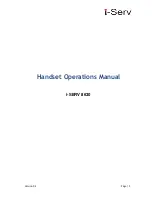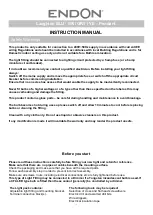
4-24
Chapter 4
Business Features Package
Group Supervisors
Multiple supervisors can be assigned to each group or one station can be given supervisor status for
multiple groups. The group supervisor (using a display keyset) can add and delete agents in real time
to/from the group to handle the workload.
Printed Reports
Agent supervisors may run printed reports to a customer-provided printer, showing the data available
on the supervisor displays.
Universal Answer (Night Bell)
Station users may dial the Universal Answer code or press the UA key to answer any outside
lines programmed to ring the UA device. The UA device can be a station, group of stations,
common bell or ring over page.
Virtual Extensions
The system has a number of virtual extensions available. These can be used for a number of
functions such as Hot Desking. Computer Telephony Integration (CTI) and pre-programmed
call forwarding. Systems provide both SLT and digital line (DLI) virtual extensions.
Voice Mail—In-band Integration
The system uses DTMF tones (in-band signalling) to communicate with any compatible voice
mail system. Stations can call forward to a voice mail system. When answered, the system
will send DTMF tones routing the caller directly to the called station user’s mailbox. Keyset
users can press a key to retrieve messages from the voice mail system. A Voice Mail
Transfer key permits keyset users to easily transfer a caller directly to an individual voice
mailbox without navigating through menus.
Voice over IP (VoIP)
The MGI cards support up to 16 voice calls over an IP network connection using the industry
standards based H.323 or SIP protocol. These standards address the means of transferring
voice, data and images through IP (Internet Protocol) networks. The cards fit into any
universal card slot. The system supports a maximum of two MGI3 or five MGI2 cards.
With VoIP, certain compression standards have also been adopted to represent each second
of voice with an amount of bandwidth. The MGI card uses G.711, G.729A or G.723 standards
voice compression Codecs. This allows for a selectable 64kbps, 8kbps or 6.3kbps bandwidth
when preparing voice compression for IP transport. Compression is used to reduce the
digitized voice into a smaller bandwidth that can be carried in smaller packets. The MGI
gateway determines the compression method for each call setup. There is also a certain
amount of frame/packet overhead in each compression channel. 64k of bandwidth can
nominally support 6–7 calls simultaneously. This can vary depending on efficiency features
like Silence Suppression and multiframe counts.
Unlike switched networks, VoIP connections consist of a sequence of numbered data
packets. Since voice conversation is usually considered "real time" these packets need to be
delivered in a consistent manner with minimal delay. This can be controlled via a Gatekeeper
which tracks and monitors voice packets. Gatekeepers are part of the H.323 standard but are
optional. The MGI card is Gatekeeper compliant. In any Ethernet environment, packet
transfers are subject to delays and/or loss. If these delays are greater than 200ms the voice
quality will deteriorate. The Ethernet data traffic and network topology should be a
consideration when applying the MGI VoIP feature. Network congestion affects call quality in
any VoIP application.
















































